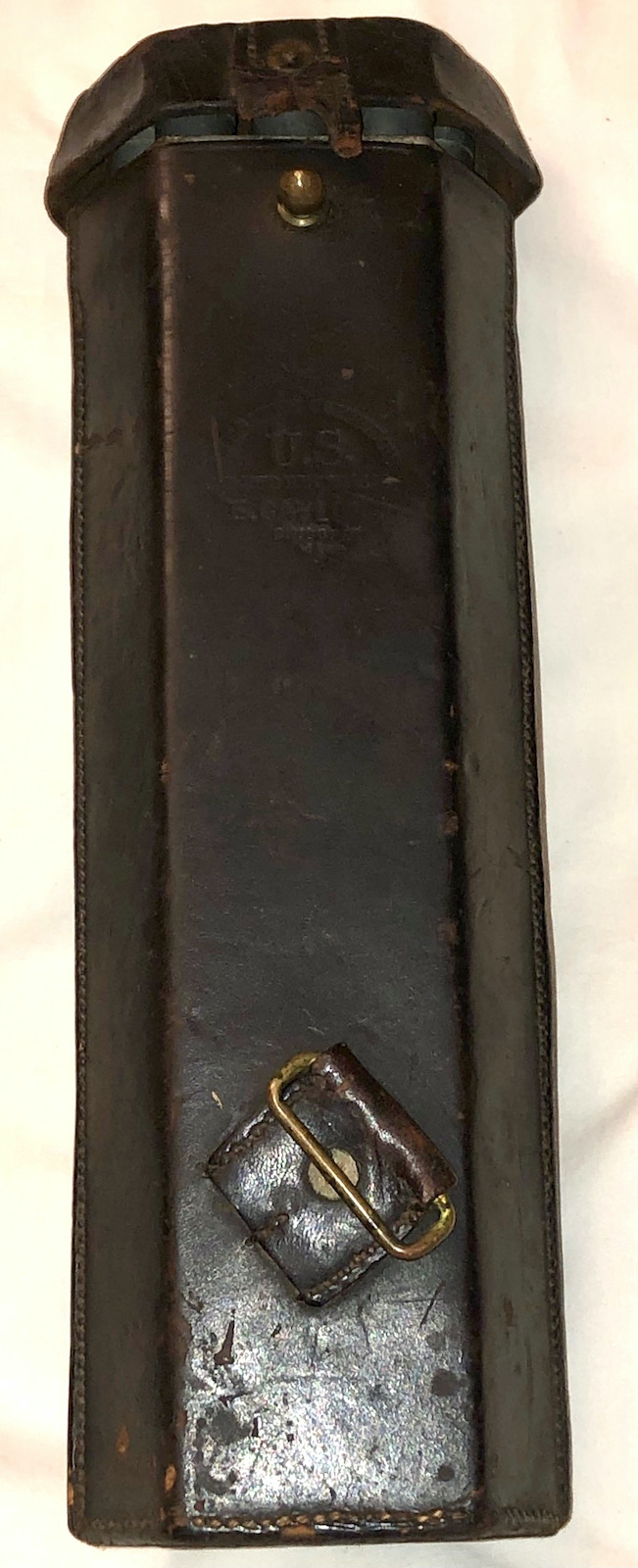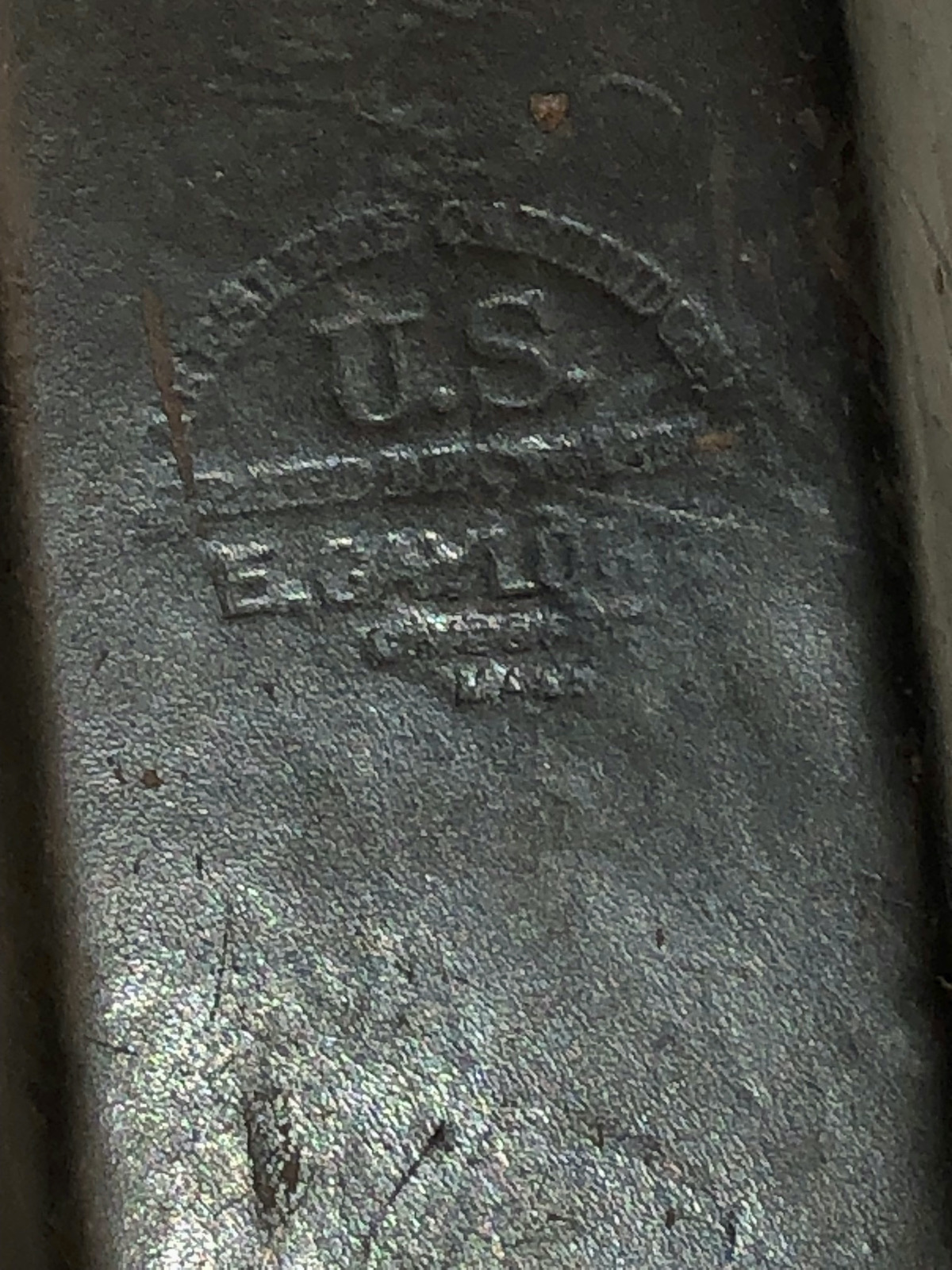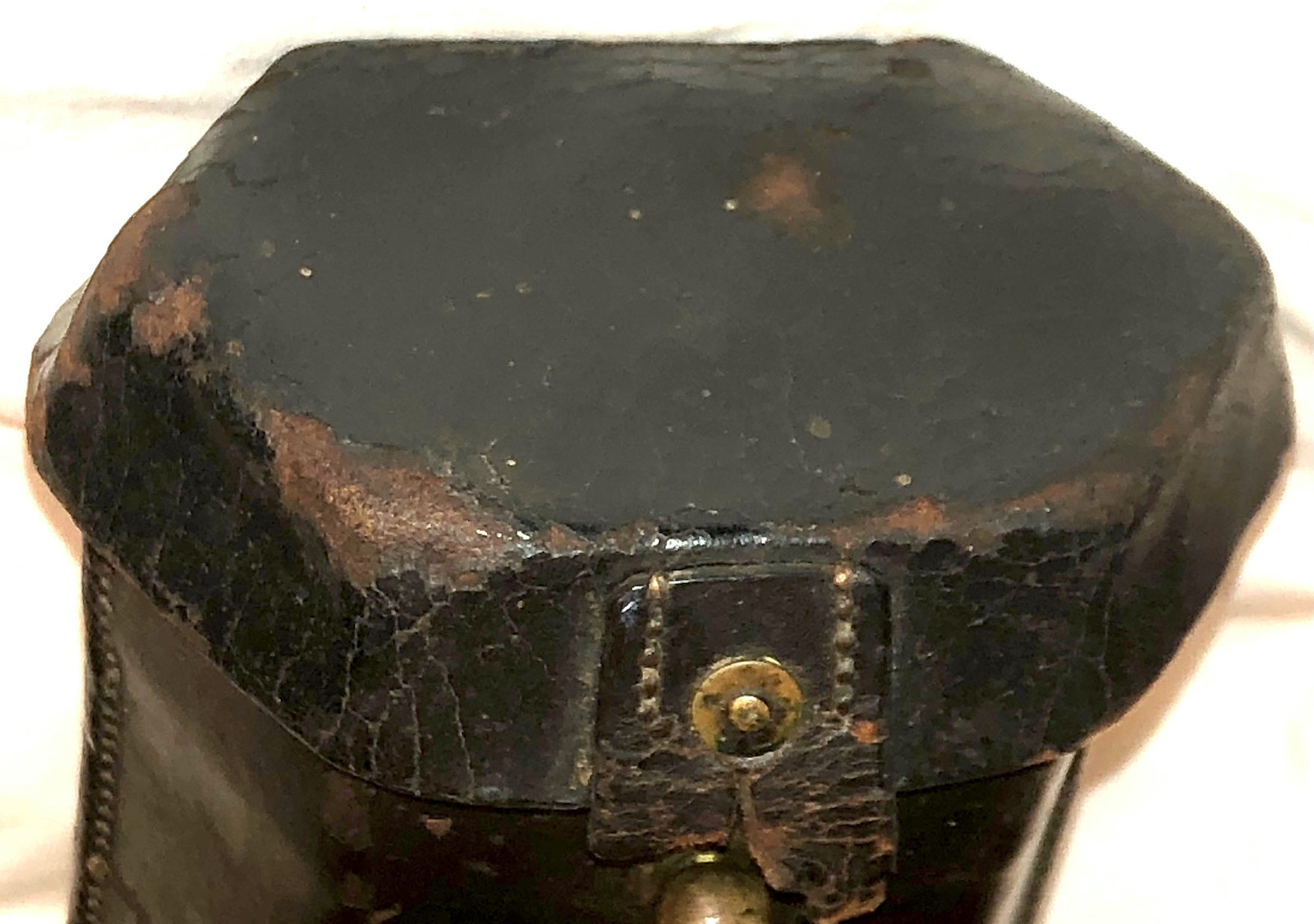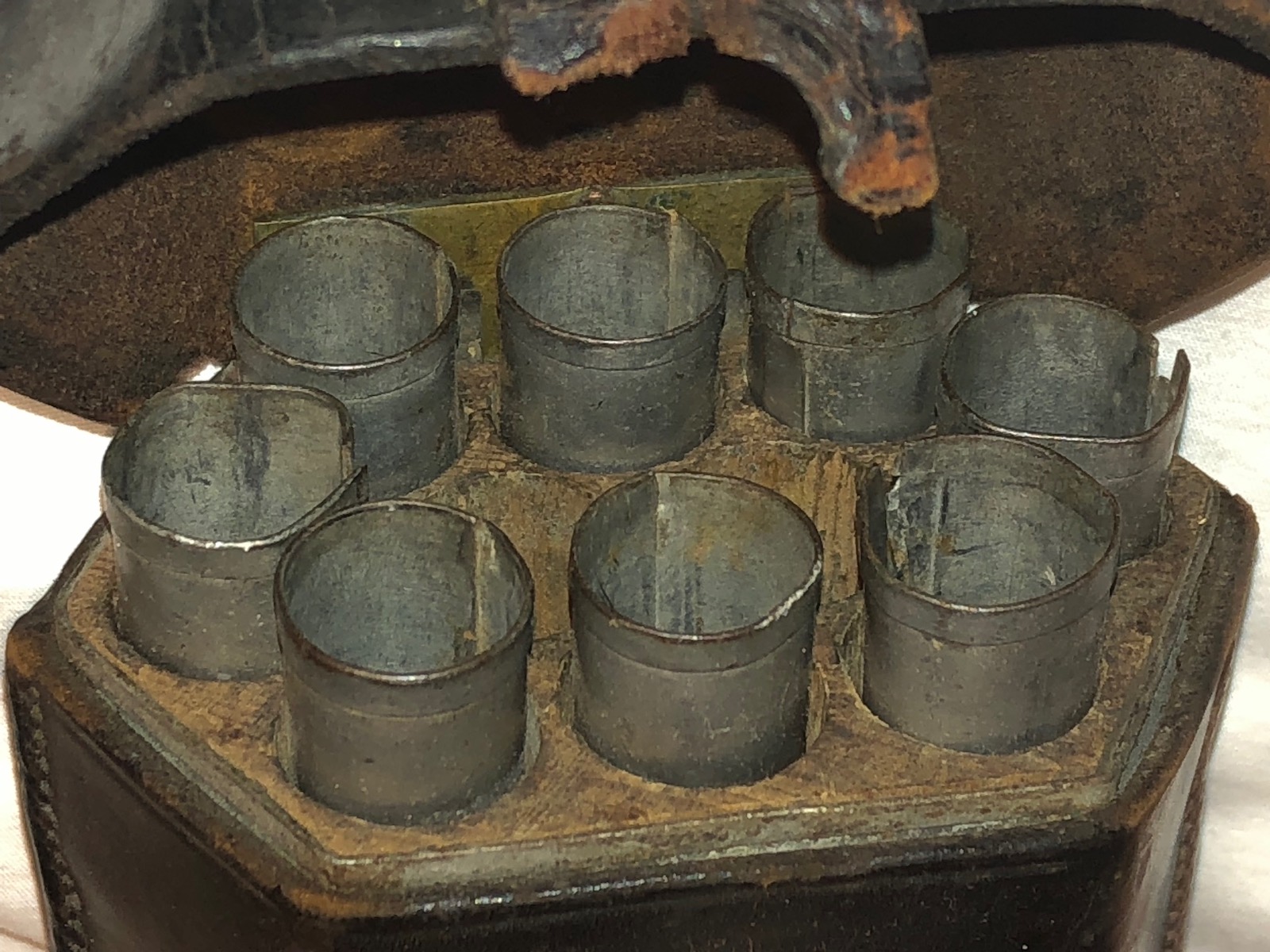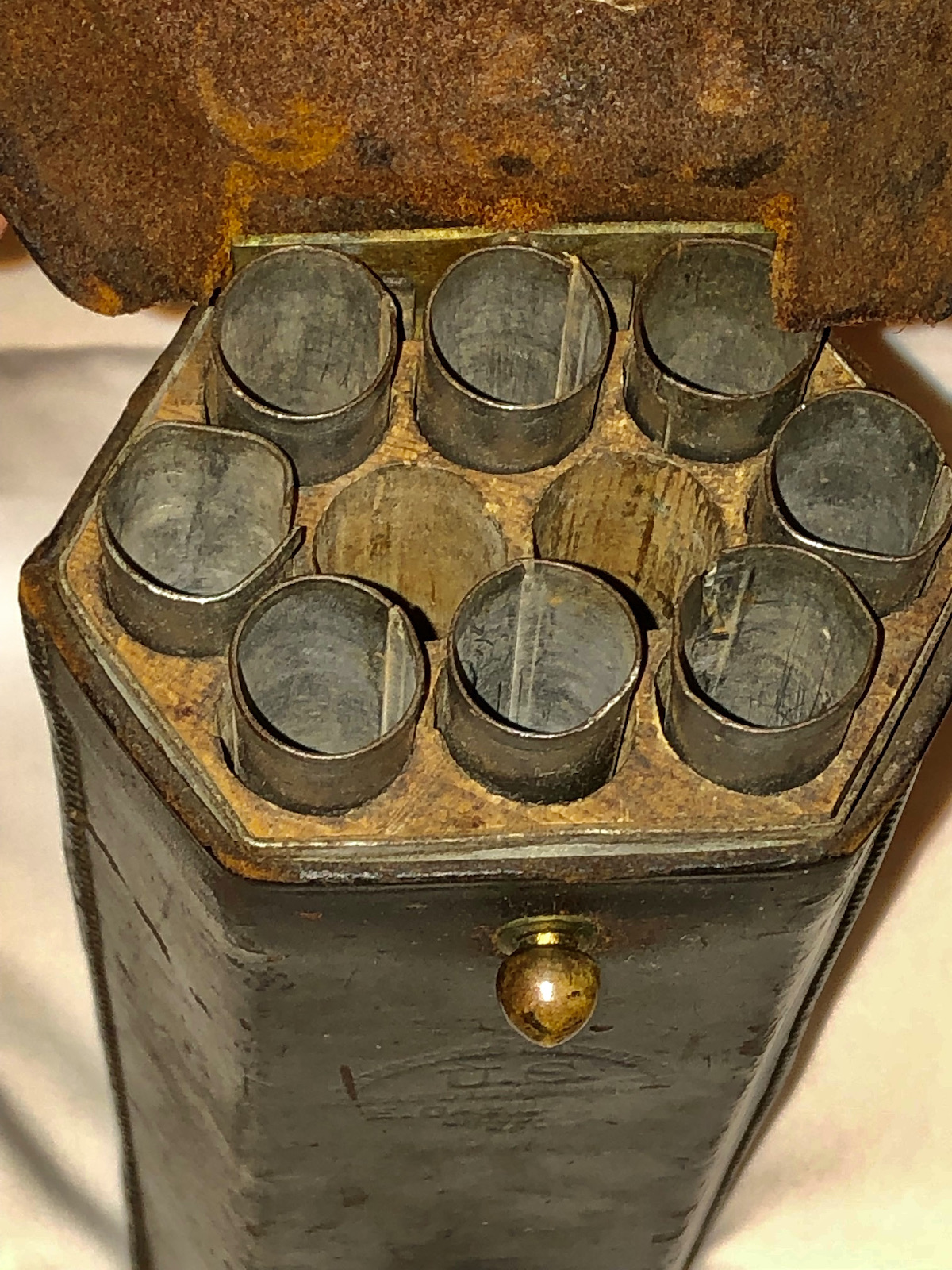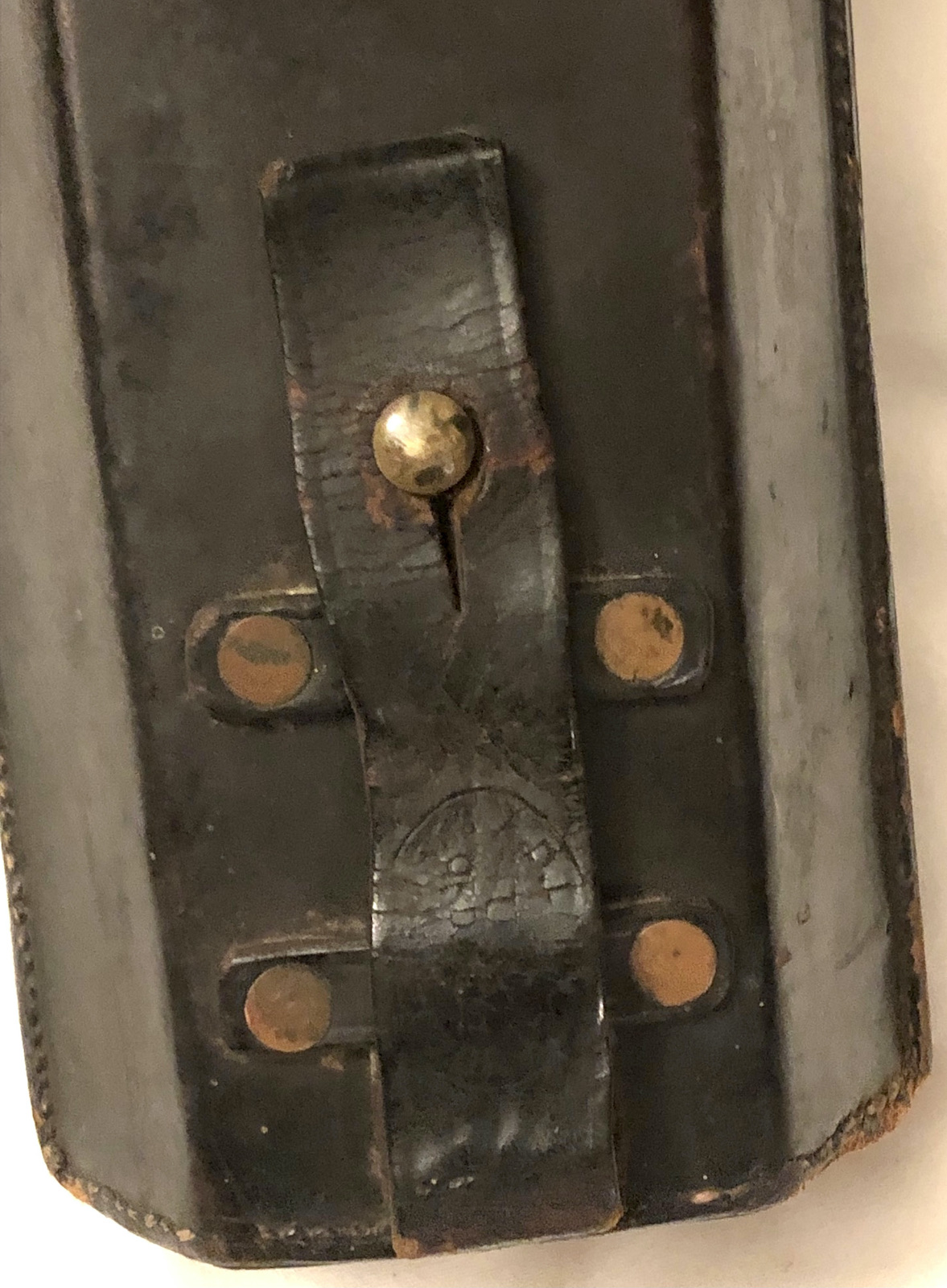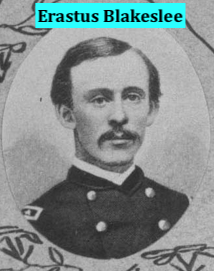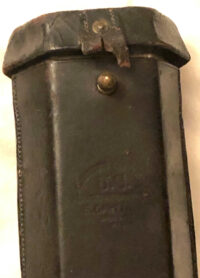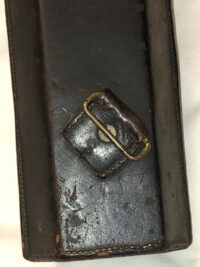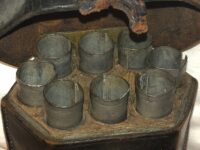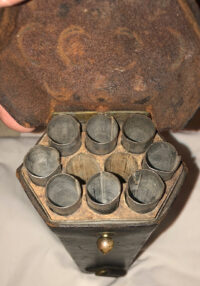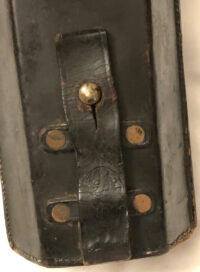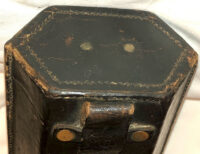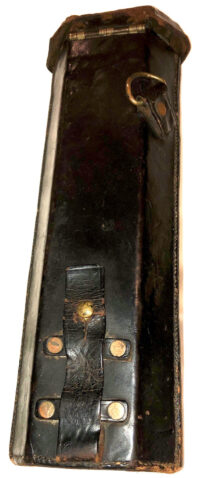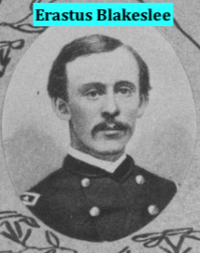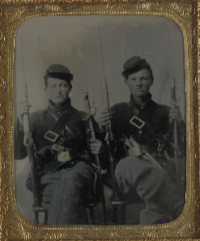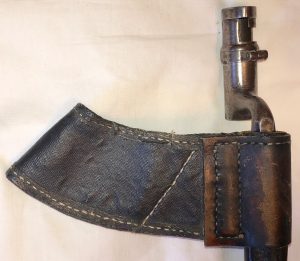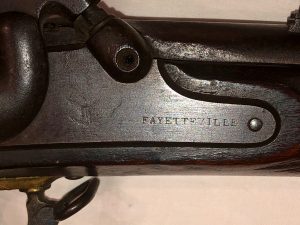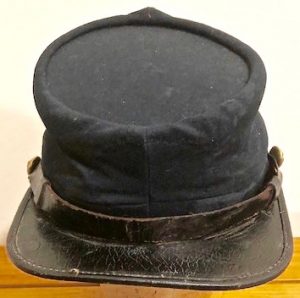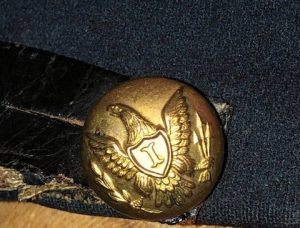Civil War Issue Blakeslee “Quick-Loading” Cartridge Box for Spencer Carbines
SOLD
Civil War Issue Blakeslee “Quick-Loading” Cartridge Box for Spencer Carbines – The Blakeslee so-called “quick loading” cartridge box, was invented by Col. Erastus Blakeslee of the 1st Connecticut Cavalry, who received a U.S. patent for the box in December of 1864. There were three variations of the box, created by Blakeslee – there was a six-tube box, (holding 42 rounds), a ten-tube box (holding 70 rounds) and a thirteen-tube box (holding 91 rounds). This ten-tube box was referred to as the “cavalry style”; the larger thirteen-tube box was for use by an infantryman armed with a Spencer rifle.
This “cavalry style”, Blakeslee, cartridge box is constructed of wood, hexagonally shaped, and covered with a tightly sewn, leather covering; it measures approximately: 12”x4”x3”. The cartridge box, in the field, contained a complement of several sheet iron or “tin” tubes, each filled with seven, Spencer .52 caliber, rimfire cartridges. Both the Spencer carbine and rifle had tubular, spring-loading magazines, which were accessed by turning an iron “toe” in the buttstock, then withdrawing the tubular magazine for loading; the magazine held seven rounds. Utilizing the Blakeslee loader, the soldier, armed with a Spencer, pulled one of the fully loaded tubes out of the loader and simply allowed the seven, unfired rounds to drop into the magazine aperture in the buttstock, then returned the spring-loaded magazine tube into the buttstock. This ingenious device greatly enhanced the firepower of each Spencer-armed soldier.
Many examples of Spencer carbines and rifles still exist today, but few Blakeslee loaders remain. This example remains in overall very good condition; the leather is in excellent shape, with some minor wear areas; there are some small, weak spots on the back or hinged side of the tube cover. Only half of the cover’s latch tab remains; of the original ten loading tubes in the box, eight remain. The sling buckles are both strongly attached. On the front of the box is stamped:
“BLAKESLEE CARTRIDGE
U.S.
PATENTED DEC 20, 1864
E. GAYLORD
CHICOPEE
MASS.”
The ten-tube or “cavalry style” boxes were manufactured concurrently with the six-tube boxes; period, company and government documents indicate that some 32,000 boxes were supplied by Gaylord and Wilkinson, prior to June, 1866. In his important book “Spencer Repeating Firearms”, author Roy Marcot notes that the ten-tube version is, “a very desirable accoutrement for collectors… few have survived.”
Spencer carbine, any of a family of rim-fire repeating arms—both carbines and rifles—that were widely used in the American Civil War. The carbine was invented by Christopher M. Spencer of Connecticut and was patented in 1860. Its buttstock contained a magazine carrying seven cartridges that could be fired in about 18 seconds. The cartridges were fed to the breech by pressure from a spring in the magazine. With the addition of the Blakeslee cartridge box as an auxiliary, the Spencer carbine had greatly improved capacity for sustained fire. The box contained from 6 to 13 tin tubes, each of which held seven cartridges. The carbine was almost exclusively a cavalry weapon, and it was normally chambered in .52 calibre.
Christopher M. Spencer, in full Christopher Miner Spencer, (born June 20, 1833, Manchester, Conn., U.S.—died Jan. 14, 1922, Hartford, Conn.), American inventor and manufacturer. In 1860 he patented a repeating carbine whose seven cartridges could be fired in 18 seconds. It was quickly adopted by the U.S. government for cavalry use, and Spencer built his own factory, which produced 200,000 Spencer carbines and rifles during the Civil War. He also patented a breechloader and a magazine gun. He later contributed considerably to the technology of drop forging. His innovative screw-making lathes enabled the huge success of his Hartford Machine Screw Co. (established 1876).
Erastus Blakeslee
| Residence Plymouth CT; 23 years old.
Enlisted on 10/9/1861 as a 1st Lieutenant. On 12/17/1861 he was commissioned into Field & Staff CT 1st Cavalry He was Mustered Out on 10/26/1864 He was listed as: * Wounded 6/1/1864 Ashland, VA Promotions: * 1st Lieut 12/17/1861 (1st Lieut & Adjutant) * Capt 3/28/1862 (As of Co. A) * Major 12/18/1863 * Lt Colonel 5/31/1864 * Colonel 6/6/1864 * Brig-General 3/13/1865 by Brevet Intra Regimental Company Transfers: * 3/28/1862 from Field & Staff to company A * 12/18/1863 from company A to Field & Staff Other Information: born 9/2/1838 in Plymouth, CT Member of GAR Post # 143 (C. L. Chandler) in Brookline, MA died 7/12/1908 in Brookline, MA After the War he lived in Greenfield, MA |



